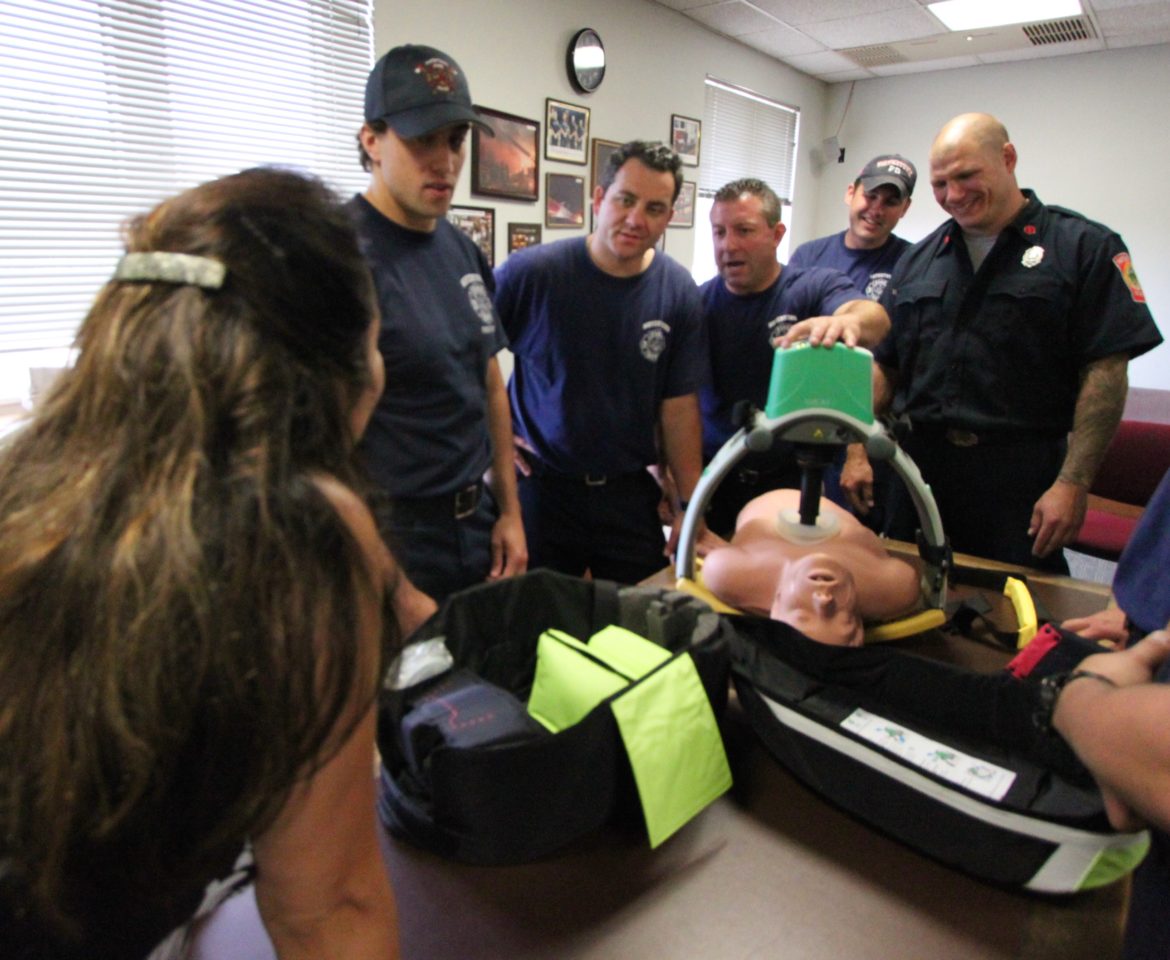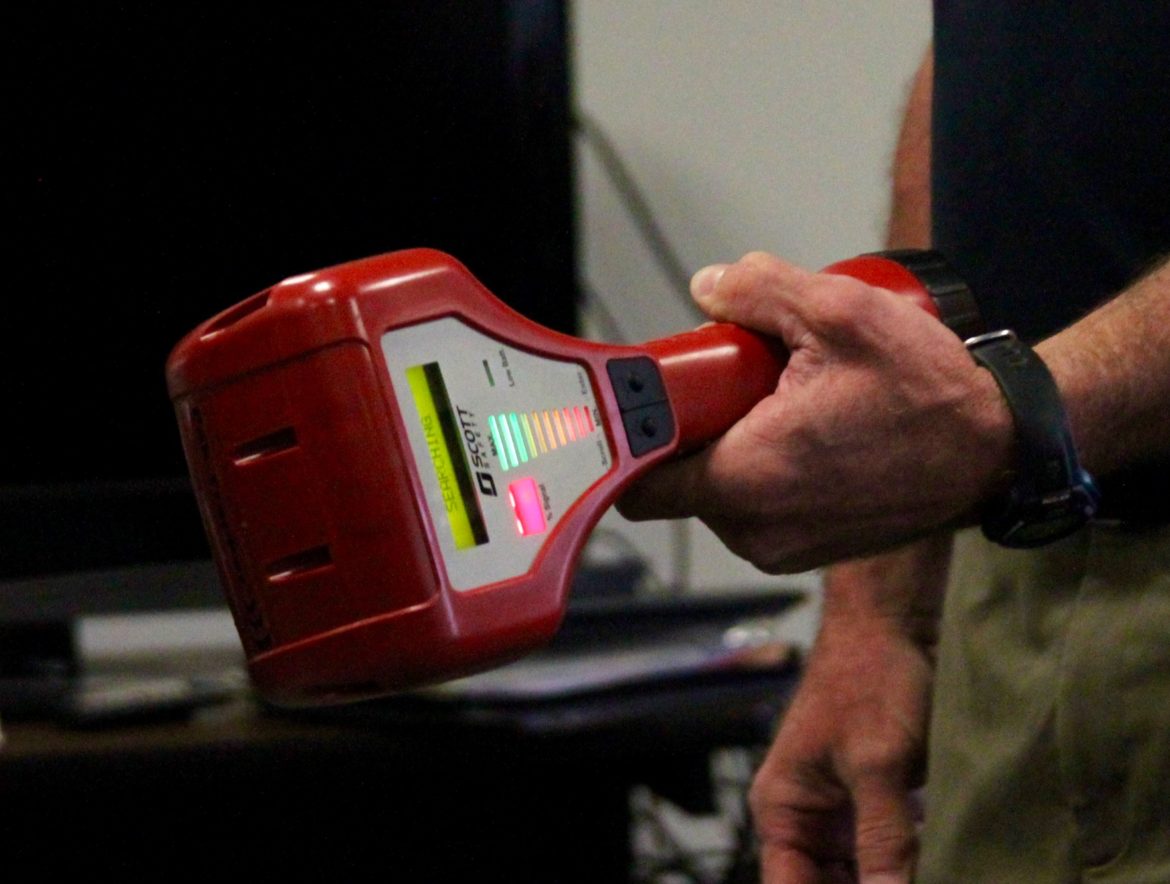
Charlie Breitrose
Watertown Firefighters learn how to use the LUCAS 2, which does automatic chest compressions on someone whose heart has stopped.
Watertown’s firefighters just finished training on two new pieces of equipment, one which could save a patient’s life and another that could save a firefighter.
The first piece of equipment, the Physio-Control LUCAS 2 Chest Compression System, goes around someone whose heart has stopped beating, and does automatic chest compressions.
“It does 102 compressions per minute,” said Crystal Perry, sales representative and trainer for Physio-Control, which makes the equipment.
Once the equipment is put into place, firefighters can do other treatment, or carry a person out of a house.
“That’s what this is perfect for – going down the stairs or in an elevator,” a firefighter said during the training. “You don’t have to stop and do compressions.”
A person doing chest compressions can only do it for about two minutes before someone else has to take over, said Lt. David Meagher, who is in charge of training for the Watertown Fire Department.
The LUCAS 2 will go on the town’s ambulance. Rob Martinello, a firefighter and trained paramedic, said he used the equipment when he worked at Armstrong Ambulance and gives it high ratings.
“It’s great. It’s an unbelievable piece of equipment,” Martinello said. “It does it perfectly and you can do all the other things.”

Charlie Breitrose
This tracking device will help find downed firefighters. It reads the signals from new air packs purchased by the Watertown Fire Department.
After the first training, the firefighters got a look at their new self-contained breathing apparatuses they will use.
The Fire Department got 31 new packs and 85 masks, said Fire Chief Mario Orangio. They were paid for with a federal grant recently secured by the town.
The packs replace some well used equipment, Meagher said.
“I started in 2000 and these packs are the only ones I have ever known,” Meagher said.
The old ones have been in use since 1999, and no longer meet the National Fire Protection Association standards, said Dave Giberti, regional manager with IPS, which sells the Scott self-contained breathing apparatuses.
The packs have bigger air bottles, but the main improvements include better face masks, a buddy breathing system to help someone without an air pack and a system that can help locate downed firefighters.
“The face masks used to be rated for 300 degrees, now they are up to 500 degrees,” Giberti said, adding that they can handle flashes of heat of over 1,700 degrees.
Each pack has a hose that can be hooked onto someone else’s mask or to provide air for someone being rescued from a fire.
They also come with the Pack Tracker, which sends out a signal when a firefighter is motionless. The alarm starts if someone does not move for 20 seconds, but can be turned off with a few shakes of the hips.
If it remains on, the signal will go off and can be tracked with a handheld device which looks like a red radar gun or infrared detector. It works kind of like a metal detector, with the signal getting stronger as you point toward it and get closer.
“It tells you the signal strength from 1 to 99,” Giberti said. “Up to 50, it shows in here (a numeric read out) and as you get over 50 it shows here. The stronger the signal the more lights you see and it the beeps getting higher in pitch.”
Each pack has a unique tracking device, and the gun can keep track of multiple packs at once. The user just toggles through the list.
With two tracking guns, the users can walk around the building and pinpoint where the downed firefighter is before going into a hazardous situation Giberti said.
Meagher said at an active fire, the Fire Department will have a rapid intervention team (RIT). The members of the RIT will have the sole responsibility of saving a downed firefighter, and these tracking devices will be one of their main tools.